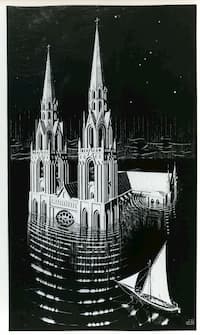It's all about the classical music composers and their works from the last 400 years and much more about music. Hier erfahren Sie alles über die klassischen Komponisten und ihre Meisterwerke der letzten vierhundert Jahre und vieles mehr über Klassische Musik.
Popular Posts
-
Performed by Alinta Chidzey (in the role of Velma Kelly) and the Chicago the Musical ensemble cast. Recorded at the show's Brisbane Medi...
-
(FILES) French singer Francoise Hardy poses at her home in Calvi on August 12, 1977. French singer Francoise Hardy, has died at the age of ...
-
Bach influences EVERYTHING! In this video, I find the five most influential Bach tracks on Pop & Rock, and ask WHY Bach has such a per...
-
by Georg Predota , Interlude “I may not be a first-rate composer, but I AM a first-class second-rate composer!” Richard Strauss conducting B...
-
By Emily E. Hogstad t, Interlude Johann Sebastian Bach is, of course, one of the most beloved composers of all time. He’s also famous for...
Tuesday, May 7, 2024
The Manhattan Transfer...last song...final concert...ever... (12/15/23)
Monday, May 6, 2024
Michael Bublé - You're the First, the Last, My Everything (Official Audio)
Haley Reinhart - Off The Ground (Official Music Video & Short Film)
Sunday, May 5, 2024
Haley Reinhart - Can’t Help Falling In Love ft. Casey Abrams
GG Vibes | I Will Survive • Gloria Gaynor | Gigi De Lana
Haydn: Piano Concerto in D No. 11 | Adam Balogh
GG Vibes | Hopelessly Devoted To You | Gigi De Lana
PI Jazz Fest returns with Singapore-Philippine collaboration
BY MANILA BULLETIN ENTERTAINMENT
AT A GLANCE
The festival’s revival was headlined by Singaporean jazz vocalist Michelle SgP, who performed alongside the Manila Philharmonic Orchestra, conducted by Maestro Rodel Colmenar.

After a hiatus since 2019, the Philippine International Jazz Festival (PI Jazz Fest ) made a vibrant comeback this year, symbolizing the resilient spirit of jazz and the enduring friendship between Singapore and the Philippines. The festival’s revival was headlined by Singaporean jazz vocalist Michelle SgP, who performed alongside the Manila Philharmonic Orchestra, conducted by Maestro Rodel Colmenar.
Sandra Lim-Viray, founder of the Philippine International Jazz Festival, sought to resurrect the event after its last show in 2019, and the disruption of the COVID-19 pandemic. The festival’s return was fueled by the passion and support of Singapore’s Ambassador to the Philippines Constance See, who proposed a special concert to commemorate 55 years of diplomatic ties between Singapore and the Philippines. “Music transcends borders, and it’s the perfect way to mark this milestone in our bilateral relations,” she said.
Held on May 3, 2024, at Sofitel Manila Garden, the headline event of PI Jazz Fest 2024 ‘Colors of Jazz’ captivated a packed crowd. The event attracted nearly 400 attendees, including former President Gloria Macapagal Arroyo, government officials, diplomats, and business leaders.
Michelle SgP enchanted the audience with her original compositions, such as “Shark Filled Oasis,” “I Just Want to Be Me,” and “Serenity,” along with a dynamic cover of “Route 66.” Her soulful and versatile performance was complemented by the exquisite sounds of the Manila Philharmonic Orchestra. Her narrative interludes, where she shared the inspirations behind her songs, made the evening all the more special.
The festival also featured performances by notable Filipino jazz musicians, including the P.I Jazz All Stars (Richard Merk, Pat Castillo, Sandra Lim-Viray, Jeannie Tiongko, Emcy Corteza, Megan Herrera, Henry Katindig, Dix Lucero, Colby Dela Calzada, Mar Dizon, Ramon Guevara, Alvin Cornista and Johnny Alegre) and The Brass Munkeys. They highlighted the diverse and rich musical landscape of the Philippines.
In her address to the audience, Sandra Lim-Viray emphasized the instrumental role the Singapore Embassy played in reviving the PI Jazz Fest, acknowledging their support in making this year’s event possible. he PI Jazz Fest 2024 exemplified the power of music to bridge cultures and celebrate the enduring bond between two nations. This year’s collaboration was a reminder of jazz’s universal language and its ability to foster friendships across borders.
Saturday, May 4, 2024
FIy Me To The Moon • Frank Sinatra (Squid Game OST)
Best of Monteverdi (90+ Minutes of Music)
INCREDIBLE VOICE FILIPINO SINGS ONE MOMENT IN TIME]
Mambo Italiano - RedSwing (1930' s Jazz Cover)
Friday, May 3, 2024
Rhythm Of The Rain - THE CASCADES - With lyrics
On My Music Desk…… Claude Debussy – La cathédrale engloutie (The Sunken Cathedral)
by Frances Wilson, Interlude

La Cathedrale engloutie – Escher
(Brigham Young University Museum of Art)
In this piece, composed in 1910 and included in Book 1 of the Preludes for piano, Debussy demonstrates his mastery of not only the piano miniature form in creating such a potent narrative in just a few pages of music, but also his deep appreciation of the instrument’s sonic palette. His music is often compared to the paintings of Claude Monet, in which ‘impressions’ of a scene or landscape are rendered through a limited palette and short brush strokes applied over a pale-coloured ground or ‘base’, which create remarkable luminosity, texture and colour blends. This has led to a misconception in the interpretation and performance of Debussy’s music in which some performers “blur” the sounds, often with over-use of the sustaining pedal.
In fact, Debussy disliked the term “impressionist”, and any temptation to employ “impressionistic” pedalling is misguided. Monet and other Impressionist painters did not blend their colours but in fact separated them – it is this separation which creates the remarkable effects of light, when viewing their paintings at a distance. Similarly, when playing and, more specifically, pedalling Debussy’s piano music, “separation” or definition of individual timbres is required; if anything, his music demands an almost Mozartian clarity.

Le Mont-Saint-Michel
Debussy did not give this prelude, nor the others in the two books, a title on the opening page. Instead each one was assigned a number, with the title placed at the end of the piece, allowing pianists to form their own individual, intuitive impressions of the music before the composer reveals his intent.
Like Monet’s pale ground on which he built his paintings, Debussy’s employs a “ground” in the opening section of the music in the form of whole-bar chords in open fifths. Over this, another chordal figure, also in open fourths and fifths, which recalls the harmonies and timbres of gamelan music, which Debussy encountered at the Universal Exhibition in Paris in 1889, and also the simple harmonies of early Medieval liturgical music. The opening direction Profondément calme sets the scene, while the secondary direction Dans une brume doucement sonore (“in a soft mist of sound”) should not be taken as an excuse to depress the pedal fully. The arc of the phrases is perhaps suggestive of the cathedral’s gradual emergence from the sea, and indeed the overall structure of the entire piece suggests an arch form.
A key change into B Major signals a shift in the narrative. Here the cathedral begins to emerge more distinctly from the mists and waves: this is portrayed through an arpeggiated figure in the bass which evokes the rolling movement of the sea. Chords continue in the right hand: this is the sound of the organ growing louder as the cathedral emerges. By bar 28, the organ is heard in all its grandeur, with dense fortissimo chords in treble and bass. This is the climax of the music and here we can imagine the cathedral fully visible, its organ playing in glorious full volume. The weight and power of the organ is further emphasised by the tolling of a single bell, deep in the bass. At bar 41 the cathedral begins to retreat and by bar 47, the organ is heard distantly as the water subsumes the building, but bursting forth again, momentarily, at bars 59-62.
In the closing section of the piece another rolling figure in the low bass represents the sea while the organ is heard faintly, also in a lower register. One senses its magnificence, even if obscured by the water. Finally, in the final measures, the cathedral’s bells are heard distantly in haunting pianissimo.
In the video below, created by the piano department of the London College of Music, a process known as “hyper production” was used to create a “layered” performance of the piece. The score was divided into separate elements, such as “bells” or “monks’, which then informed the treatment of each element in the recording process to create a more intense and colourful sound when played back through a 3D Audio speaker array (like surround sound). It’s certainly an interesting approach – though the result may not to be everyone’s taste – and I think it is instructive as it clearly highlights and differentiates the individual motifs of the music.
The entire piece is remarkably graphic, with a clarity and layering of contrasting voices and timbres which calls for extremely precise yet highly expressive playing. Managing the climactic episode is an exercise in control to portray the full grandeur of the organ, and the monumentalism of the cathedral itself as it rises from the waves and swell of the ocean.
